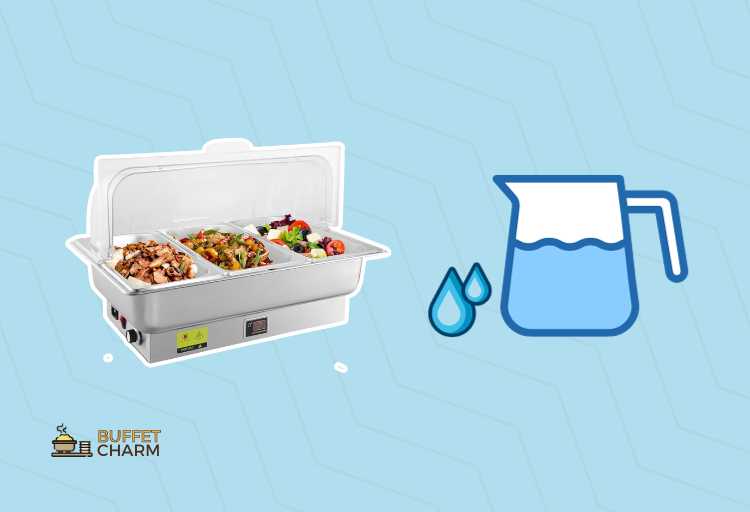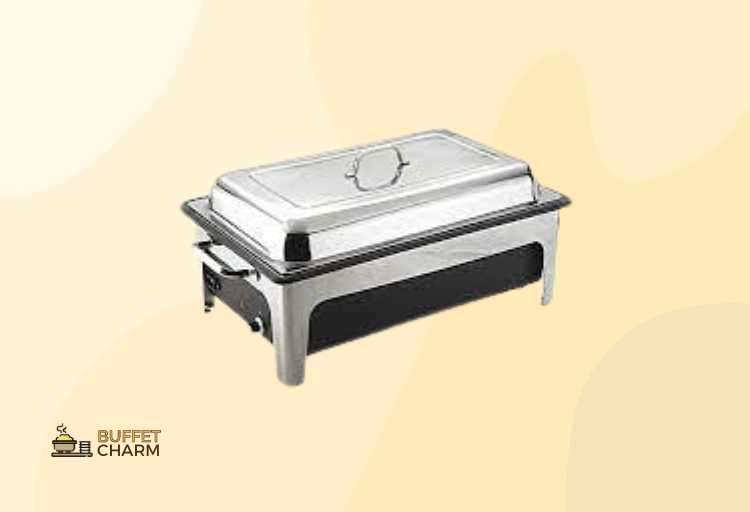Do You Put Water in an Electric Chafing Dish
Using an electric chafing dish is a convenient way if you are not a fan of chafing fuel. If you are planning to buy the eclectic chafing dish it’s important to know whether it has a water pan or not.
Electric chafing dishes come with a water pan, you can fill the water in the pan to the required level, and on top of the water pan place the food pan and turn on the power.
Electric chafing dishes are a quick way to warm your food however in my experience, these dishes are more suitable for a small gathering at your home or office.

9 Considerations for Using an Electric Chafing Dish
| Steps | Instructions |
|---|---|
| 1 | Ensure the electric chafing dish is placed on a stable, heat-resistant surface. |
| 2 | Plug in the electric chafing dish and turn it on. |
| 3 | Fill the warming unit with water, making sure not to exceed the recommended water line, which can be checked on the side of the pan. |
| 4 | Wait for the water to heat up; this may take a few minutes. |
| 5 | Place the food pan or trays with the prepared food onto the warming unit. |
| 6 | Adjust the temperature settings as needed to keep the food warm without overcooking. |
| 7 | Monitor the water level regularly and refill if necessary to maintain the proper water level in the warming unit. |
| 8 | When finished, turn off the electric chafing dish and unplug it. |
| 9 | Allow the unit to cool before cleaning and storing it properly. |
Heating Methods in Electric Chafing Dishes
Electric chafing dishes differ from traditional chafing dishes in terms of their heating mechanisms. Electric chafing dishes use various methods to keep food warm, and this impacts whether water is necessary.
Do You Know
You can use casserole dishes to keep your food warm on the heating element or a warming tray of electric chafing dishes, instead of using chafing pans.
1. Water Bath Electric Chafing Dishes
Some electric chafing dish models retain the water bath design of traditional chafing dishes. In these models, a water pan or reservoir is still used, and the food pans sit directly above the water bath. The electric heating element heats the water, producing steam that keeps the food moist and hot.
2. Dry Heat Electric Chafing Dishes
Other electric chafing dish models utilize dry heat elements. In these cases, water is not required as part of the heating process. The electric coils or elements directly heat the food pans, maintaining the desired temperature without the need for a water bath.
Determining If Water Is Necessary
Whether you should put water in an electric chafing dish depends on the specific model and the type of dishes you plan to serve. Here are some guidelines to help you make an informed decision:
Reading the Manufacturer’s Instructions
The most critical step is to consult the manufacturer’s instructions that accompany your electric chafing dish. These instructions will provide clear guidance on whether water is required or recommended for your specific model.
Do You Put Water in an Electric Chafing Dish?

When to Use Water
There are situations where using water in an electric chafing dish can be beneficial:
- Moist or Delicate Dishes: If you plan to serve dishes that are moist or delicate, such as soups, sauces, or items that require humidity to prevent drying, using water is advisable. The water bath design in certain electric chafing dishes can help maintain the desired moisture level and quality of such dishes.
- Preventing Scorching: Water can act as a buffer to prevent the bottom of food pans from overheating or scorching. This is particularly relevant for dishes with high moisture content.
When Water Is Not Needed
In contrast, for dishes that do not require moisture retention, such as roasted meats, poultry, or baked goods, water may not be necessary in an electric chafing dish. These dishes can be heated effectively using dry heat methods without compromising their quality.
Benefits of Using Water
Understanding the advantages of using water in an electric chafing dish can help you make an informed decision:
1. Moisture Retention: Water helps maintain the moisture content of dishes, ensuring they remain succulent and flavorful.
2. Prevention of Drying: Dishes that are prone to drying out, such as bread rolls or certain pasta dishes, can benefit from the humidity provided by water.
3. Consistent Heating: Water bath electric chafing dishes offer even and consistent heating, reducing the risk of hot spots or scorching.
Using Water Safely
If you choose to use water in your electric chafing dish, it’s essential to do so safely:
1. Appropriate Water Level: Add an appropriate amount of water to the water pan, following the manufacturer’s recommendations. Adding too much water can result in overflowing or dilution of sauces.
2. Monitor Water Levels: During use, periodically check the water level to ensure it remains at the desired level. Refill as needed to maintain consistent steam production.
3. Cleaning After Water Use: After each use, clean and dry the water pan and food pans thoroughly to prevent mineral buildup or corrosion.
Alternative Methods for Moisture Retention
If your electric chafing dish does not accommodate the use of water or you prefer not to use it, there are alternative methods to retain moisture in your dishes:
1. Lid Usage: Utilize lids for the food pans to trap steam and moisture, especially when serving dishes that need to retain their humidity.
2. Foil Covering: Covering the food pans with aluminum foil can help lock in moisture and prevent drying. Ensure that the foil does not come into direct contact with the heating element.
Conclusion
To sum up, putting water in an electric chafing dish is important to keep your food warm and tasty while you serve it. Just make sure to follow the recommended water levels and keep an eye on the water while you use it. This will help you serve delicious meals and make your gatherings extra special for everyone.
